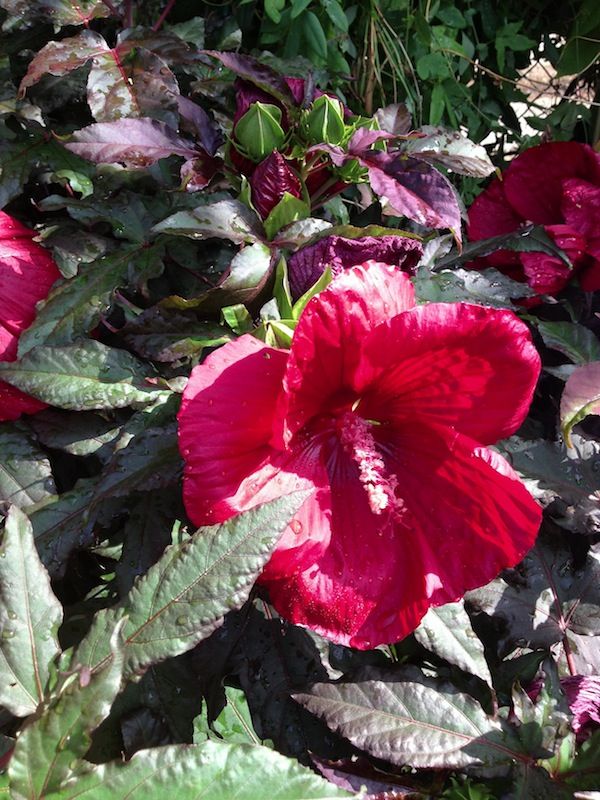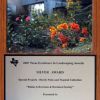Hardy Hibiscus: Tropical Looks with Perennial Style
May 21, 2015 | By webadmin
Combining the looks of a tropical with the hardiness of a perennial in one plant isn’t always an easy order to fill. Especially if you’re looking for big, dramatic flowers. Normally, the name “hibiscus” conjures up thoughts of tropical beauties, ill-suited to a Texas-tough landscape bed. If you love the look of the tropics, but need a plant that can tough out both the Texas summer and winter, consider perennial hardy hibiscus.

Hardy hibiscus plants offer up huge, bold and beautiful tropical blooms; but on plants that return year after year in the landscape. Being herbaceous perennials, their top growth will freeze down in the winter, then reemerge the following spring. There are a number of different varieties to choose from that offer up an array of bloom colors and shapes.
A few of our favorite perennial hardy hibiscus varieties:
‘Moy Grande’ is one of the best varieties for Texas gardens. It produces a profusion of huge rose-pink flowers that can each reach a foot in diameter! Plants bloom off and on all summer and through fall. Plants grow to 5-feet tall and wide.
‘Texas Star’ is another favorite for our Dallas gardens. Plants sport slender star-shaped leaves and flowers. Blooms are a deep crimson red; the variety ‘Alba’ offers up clear white flowers. While ‘Texas Star’ will happily grow in low-maintenance landscape beds, it can also be grown as a marginal water plant. It will thrive in wet areas along streams, ponds and rain gardens. Plants grow 4- to 7-feet tall and about 3-feet wide.
‘Flare’ offers up light green foliage and large fuchsia red flowers. Growing to a dense 4-feet wide and tall, this heavy blooming variety is perfect for large landscape or perennial beds. ‘Flare’ thrives in our heavy clay and alkaline soils.
How to grow:
Hardy hibiscus prefer rich, well draining soil and a solid six hours of sun. However most perennial hibiscus are tolerant of our heavy soils. Remember: healthy soil equals healthy plants! Add compost and expanded shale to improve overall soil quality and drainage. Once your hardy hibiscus is planted, top dress it with 1-2 inches of mulch to conserve moisture through summer.
Maintain Your Plants
Until established, water often. Once plants are established, water needs will decrease. Fertilize in spring as new growth emerges. As flowers expire through the bloom season, deadhead to encourage new blooms. Hardy hibiscus will bloom summer through early fall, then will die back to the ground after the first frost. Cut remaining stems back to ground level.
__full-width.jpg)
Planting Partners
Plant hardy hibiscus alongside other hardy perennials and shrubs such as purple coneflower, coreopsis, daylilies, abelia, Turk’s cap, allium, and bearded iris. Choosing companion plants with similar sun and water requirements will help to ensure the success of your entire landscape. Happy planting!
